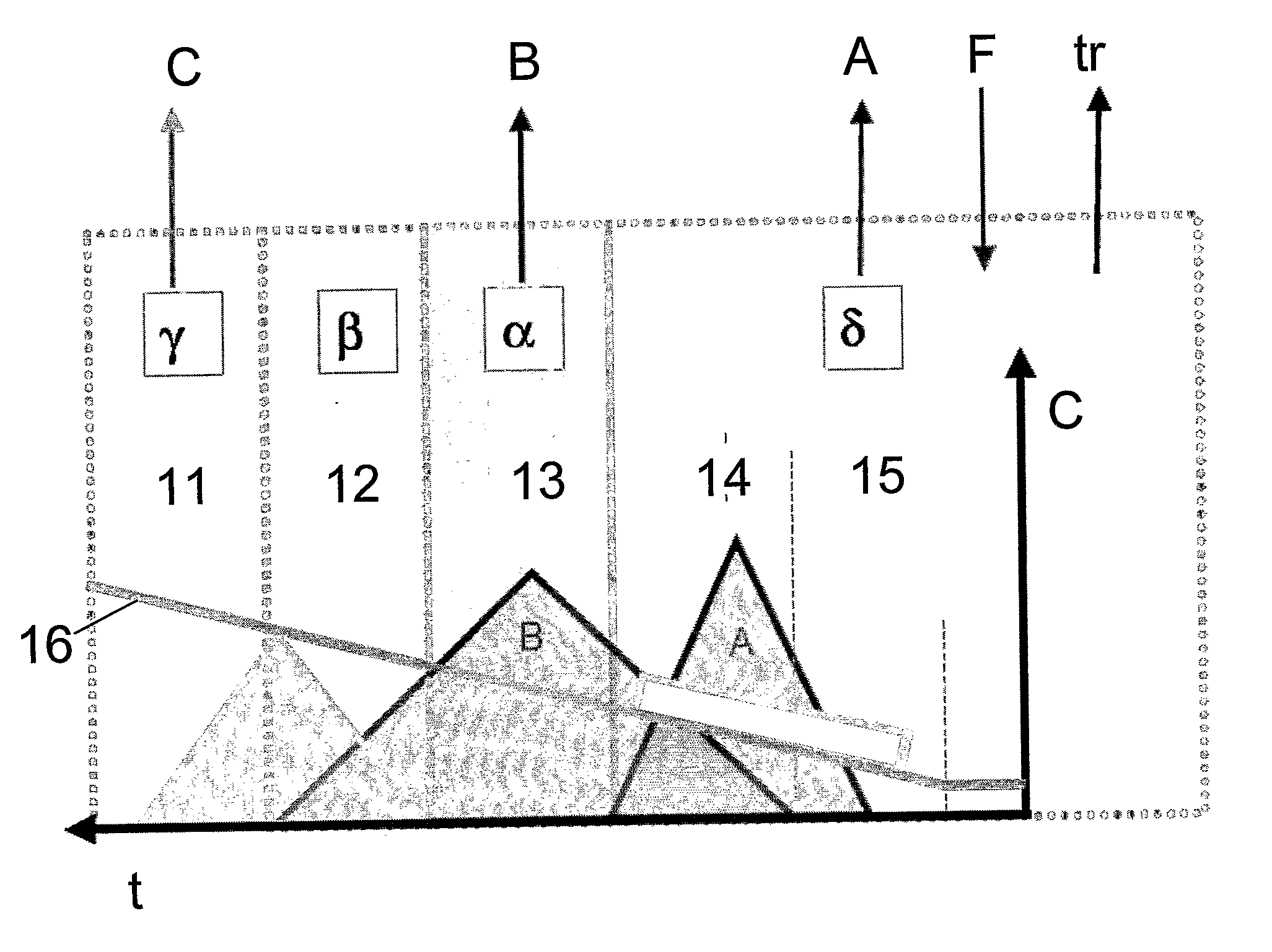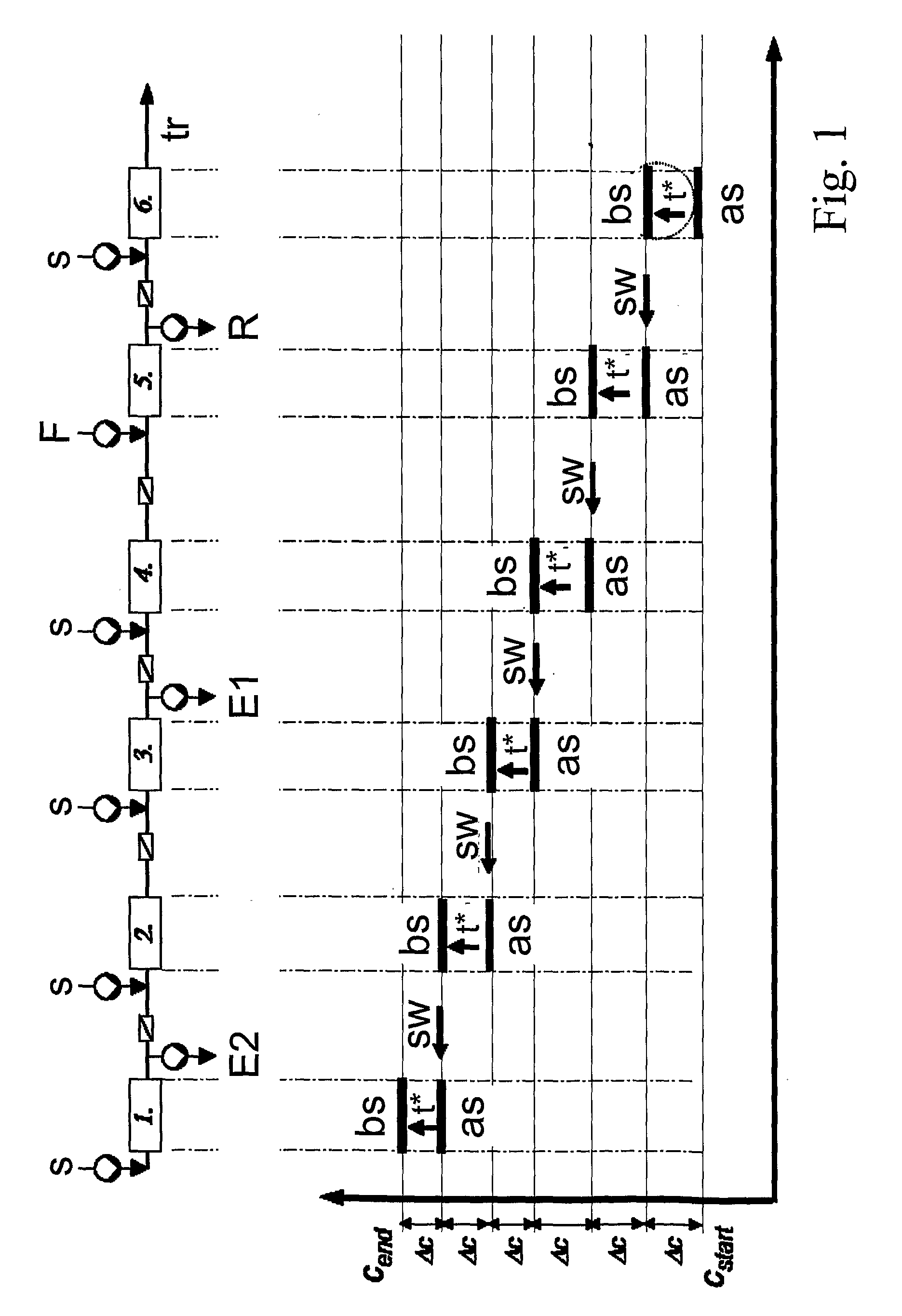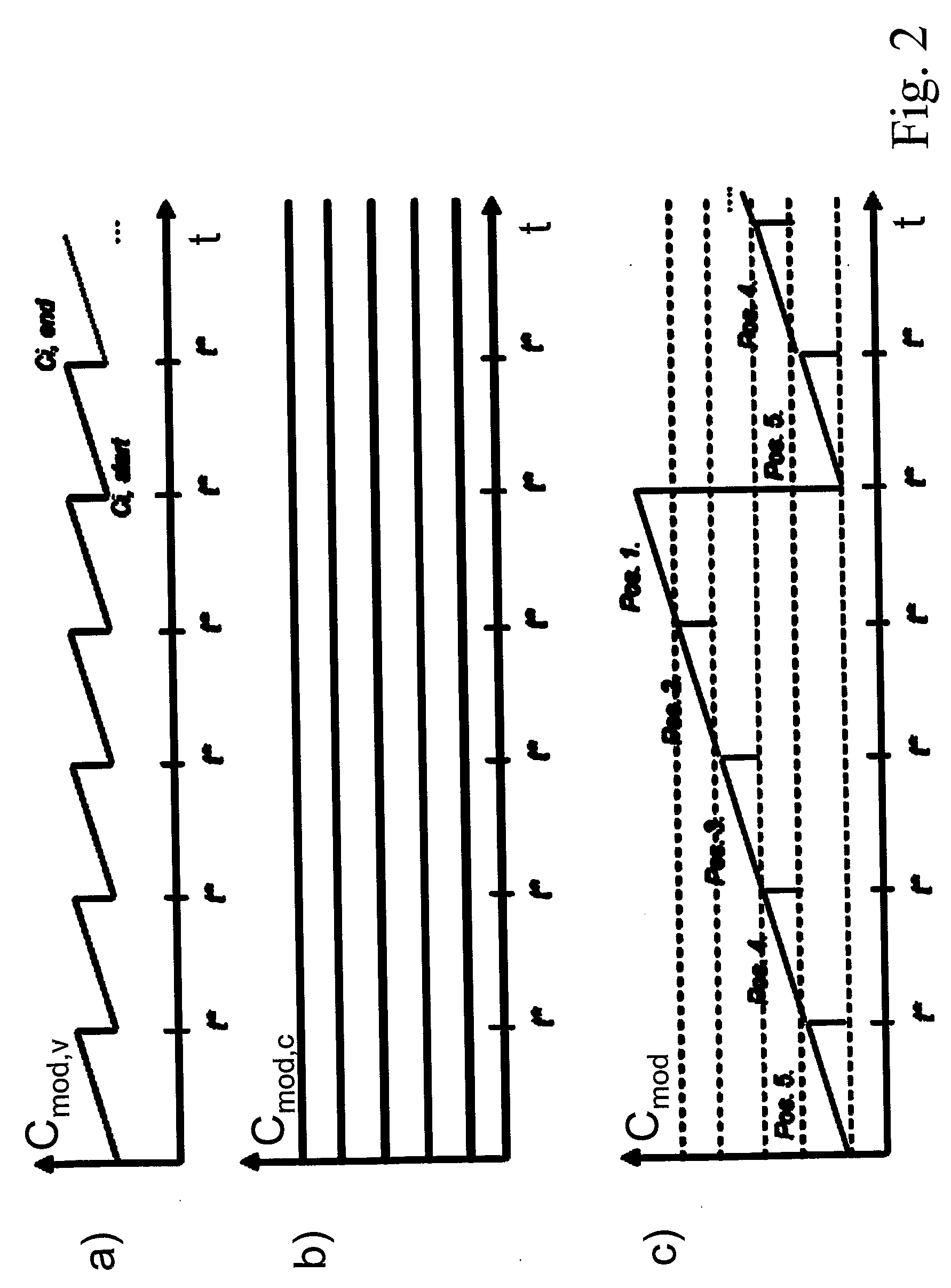Method and device for chromatographic purification
- Summary
- Abstract
- Description
- Claims
- Application Information
AI Technical Summary
Benefits of technology
Problems solved by technology
Method used
Image
Examples
experimental verification
Purification of Calcitonin
[0137]The novel process has been experimentally verified with an 8 column open loop system as shown in FIG. 15. Input parameters for the experiment are taken from a simulation. The figure below is equivalent to FIG. 6. The chromatogram as well as the solvent gradient is split into tasks, fulfilled by the four sections α-β-δ. The process is fully analogue to the gradient batch elution, but enables countercurrent recycling of the non pure side-fractions in section δ and between section β and δ.
[0138]The 8 columns inside the four sections have the following tasks:
Section γ: (1 column)[0139]Column 1. wash component C out of the system.
Section β: (1 column)[0140]Column 2. wash out a small valuable amount of B, which is contaminated by C. To recycle B, the liquid outlet stream of column 2. is washed into column 5.
Section α: (1 column)[0141]Column 3. wash out the purified product B. Fresh solvent is used to guarantee the highest possible purity.
Section δ: (5 colum...
PUM
 Login to View More
Login to View More Abstract
Description
Claims
Application Information
 Login to View More
Login to View More - R&D
- Intellectual Property
- Life Sciences
- Materials
- Tech Scout
- Unparalleled Data Quality
- Higher Quality Content
- 60% Fewer Hallucinations
Browse by: Latest US Patents, China's latest patents, Technical Efficacy Thesaurus, Application Domain, Technology Topic, Popular Technical Reports.
© 2025 PatSnap. All rights reserved.Legal|Privacy policy|Modern Slavery Act Transparency Statement|Sitemap|About US| Contact US: help@patsnap.com



